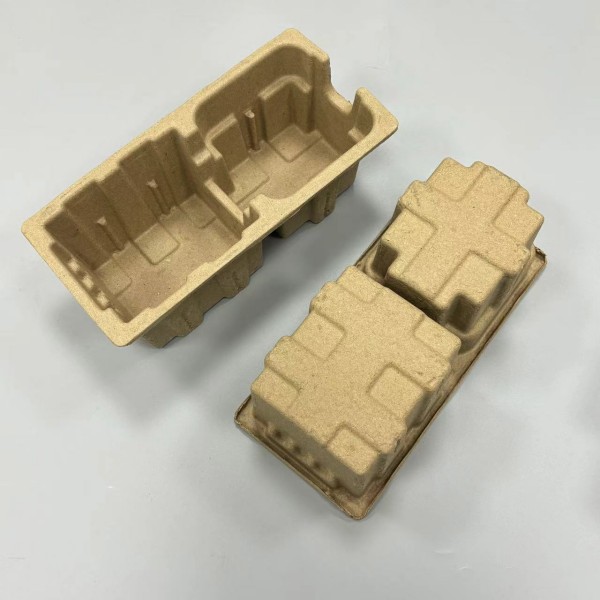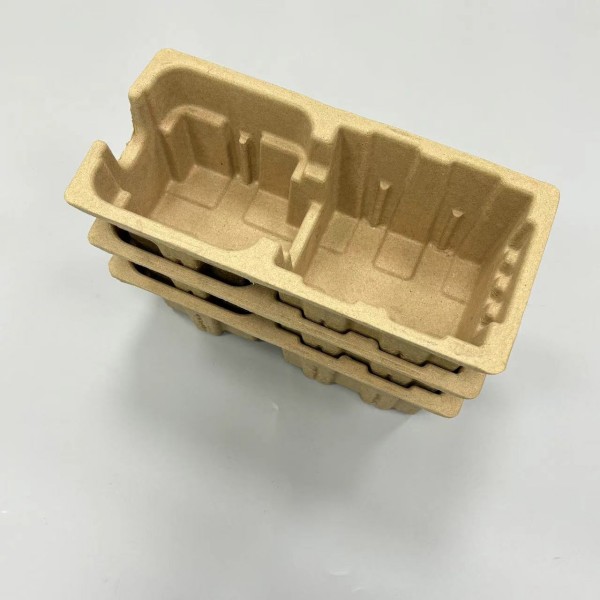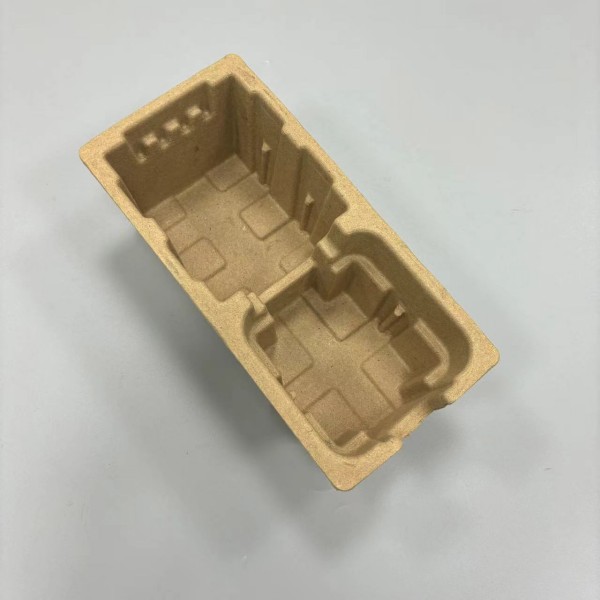As the demand for sustainable, plastic-free alternatives continues to grow, molded pulp packaging has emerged as a powerful solution for eco-conscious businesses. Known for being biodegradable, compostable, and made from recycled materials, molded pulp packaging is used across industries such as electronics, cosmetics, food, and e-commerce. Among the molded pulp manufacturing techniques, two major methods stand out: wet press molded pulp and dry press molded pulp. Though they may appear similar in concept, they differ significantly in production processes, appearance, performance, and cost.
At Lvxin, we specialize in delivering customized, eco-friendly molded pulp solutions using both wet press and dry press technologies. In this article, we explore the five key differences between these two processes to help you choose the best option for your product’s packaging needs.

1. Manufacturing Process
The most fundamental difference between wet press molded pulp and dry press molded pulp lies in their manufacturing technique. Wet press molded pulp involves forming the product in a mold and then applying high-temperature pressing using heated molds. This process not only removes excess moisture but also compresses and smooths the product surface, resulting in a denser, more refined final product. The heated pressing stage is crucial for achieving premium aesthetics and structural integrity. Dry press molded pulp, on the other hand, skips the heated compression phase. After forming, the product is dried using natural air-drying or oven-drying methods and then lightly pressed using cold or low-temperature compression. This process is simpler and more energy-efficient, but the final product is typically rougher and less dense compared to wet-pressed pulp. At Lvxin, we offer both technologies with precision tooling to ensure your packaging requirements are met, whether you need a luxury look or a cost-efficient, functional design.

2. Surface Finish and Aesthetic Quality
One of the key advantages of wet press molded pulp is its superior surface finish. The high-pressure heated molds produce smooth, uniform, and often glossy surfaces that can rival the appearance of plastic. This makes wet press molded pulp ideal for premium retail packaging, such as mobile phone boxes, cosmetics, electronics, and other high-end products. Dry press molded pulp has a coarser, more fibrous surface texture. Since it lacks the heated pressing step, the fibers do not compress as tightly, resulting in a more natural and raw appearance. While it may not be as visually refined, it effectively conveys a strong eco-conscious branding message. Lvxin’s wet press molded pulp packaging has been used by global brands seeking to align luxury with sustainability. Meanwhile, our dry press molded pulp solutions are trusted by industries that prioritize cost-effectiveness and functionality over aesthetics.
3. Strength and Structural Performance
Wet press molded pulp generally offers better structural strength due to the dense fiber bonding achieved during hot pressing. It provides greater resistance to impact, moisture, and deformation, making it ideal for packaging fragile or high-value items. Additionally, because of its compact nature, wet press products can often be made thinner without sacrificing durability, reducing material usage. In contrast, dry press molded pulp is more porous and lightweight, making it less suitable for protective applications where mechanical strength is critical. However, its lightweight nature is an advantage for reducing shipping costs, especially when used as inner trays, food containers, or agricultural packaging. At Lvxin, we engineer both wet and dry press solutions with optimized fiber blends and mold designs to ensure adequate performance while minimizing environmental impact.
4. Cost and Energy Consumption
Cost is often a decisive factor for businesses when selecting between wet press and dry press molded pulp packaging. Dry press molded pulp has a lower production cost. It requires less energy since it eliminates the need for high-temperature pressing, and the equipment setup is simpler and more affordable. This makes it a popular choice for large-volume packaging applications such as egg trays, industrial cushioning, and disposable food trays. Wet press molded pulp incurs higher manufacturing costs due to the energy-intensive hot pressing step and the precision molds required. However, the higher perceived value of the final product can justify the cost in premium markets. Brands focused on enhancing customer unboxing experiences or reinforcing a premium brand image may find wet press molded pulp a worthwhile investment. At Lvxin, we help customers strike the right balance between aesthetics and cost-efficiency, offering scalable production for both types of molded pulp packaging to meet diverse market needs.

5. Applications and Sustainability
Both wet press and dry press molded pulp are forms of eco-friendly molded pulp packaging, yet they cater to different end uses. Wet press molded pulp is commonly used for retail-ready packaging that demands both protection and presentation. This includes electronic device packaging, luxury consumer goods, cosmetic sets, and custom gift boxes. The smooth finish and sleek look enhance the product’s shelf appeal and elevate the overall brand experience. Dry press molded pulp is best suited for industrial applications, protective inner trays, agricultural produce packaging, and disposable foodservice items. Its natural, fibrous texture speaks to eco-conscious consumers and reflects a commitment to sustainability. From an environmental standpoint, both wet press and dry press molded pulp are biodegradable, recyclable, and made from renewable or recycled paper materials. However, dry press molded pulp tends to have a lower carbon footprint due to reduced energy usage during manufacturing. At Lvxin, we uphold strict sustainability practices across all production lines, ensuring every piece of molded pulp packaging we deliver contributes to a greener planet. We offer post-consumer fiber options, closed-loop water systems, and waste-reduction strategies to align our operations with global ESG goals.
Conclusion:
Choosing between wet press molded pulp and dry press molded pulp ultimately depends on your packaging objectives, product category, budget, and brand strategy. If you're aiming for luxury packaging with impeccable finish and strength, wet press molded pulp is the superior choice. If you prioritize affordability, volume, and energy efficiency, dry press molded pulp offers unmatched value. At Lvxin, we pride ourselves on being a trusted partner for businesses seeking innovative, eco-friendly molded pulp packaging solutions. Our team of engineers, designers, and sustainability experts work closely with clients to design packaging that not only protects products but also enhances brand perception and reduces environmental impact. Interested in learning more about how wet press molded pulp or dry press molded pulp can elevate your packaging strategy? Contact Lvxin today and discover how we can help you deliver exceptional, sustainable packaging that customers and the planet will love.

